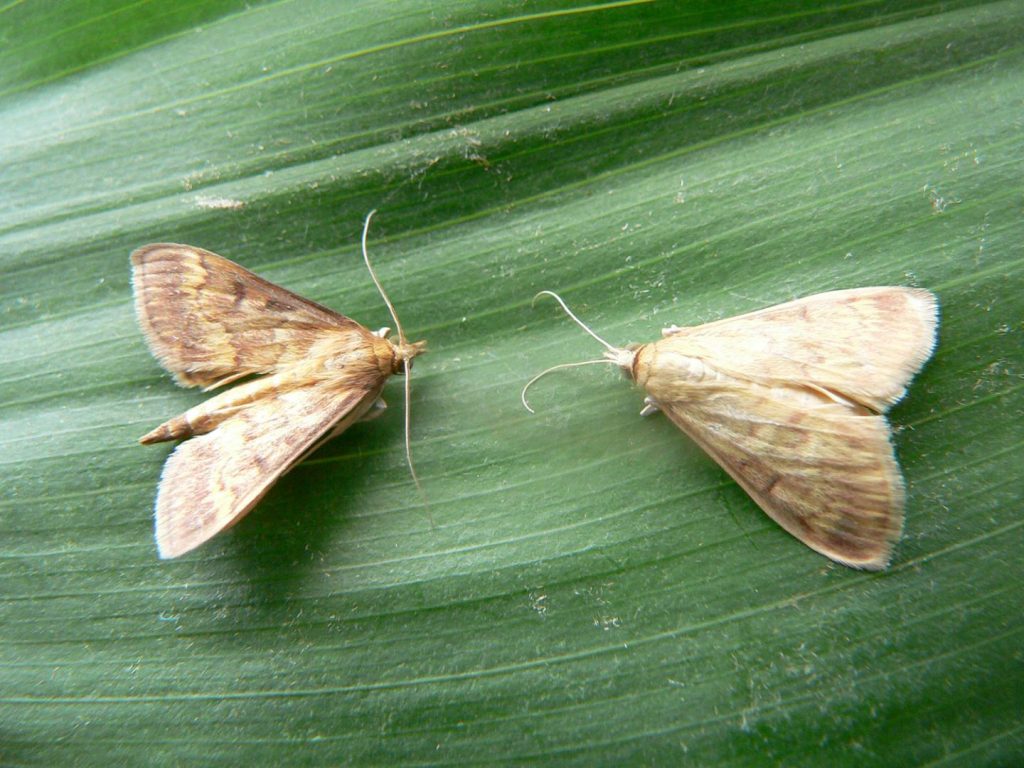Female moths produce a sex pheromone, a different blend of chemicals for each species, which attracts males from a distance. Males detect these chemicals with exquisitely sensitive hair-like structures in the antenna. These hairs contain specialized neurons, nerve cells that express pheromone receptors which are activated when they bind to individual pheromone components. Different species have different pheromone receptors, and so the ability to most accurately smell females of the same species prevents attraction to other females. Solving the puzzle of why a certain pheromone receptor is activated only by a specific chemical has motivated much past research. “Our previous work in mapping the pheromone receptors of the European Corn Borer convinced us that this species doesn’t fit the mold, and so we took another approach,” says lead author Fotini Koutroumpa.
The European Corn Borer uses a simple pheromone with only two isomeric compounds, identical except for the orientation of a double bond. The two “pheromone strains” of this species produce them in different proportions. E-strain females make mostly the E isomer with traces of the Z isomer, which is highly attractive to E-strain males. Z-strain females release the opposite ratio, attracting Z-strain males. In both cases, both components are absolutely necessary for attraction, and males of both strains can smell both, with similar or identical antennal structures and pheromone receptors. So what difference among the E and Z males could explain their opposite preferences? “We decided to look for a difference at the genetic level”, says co-author Astrid Groot.

